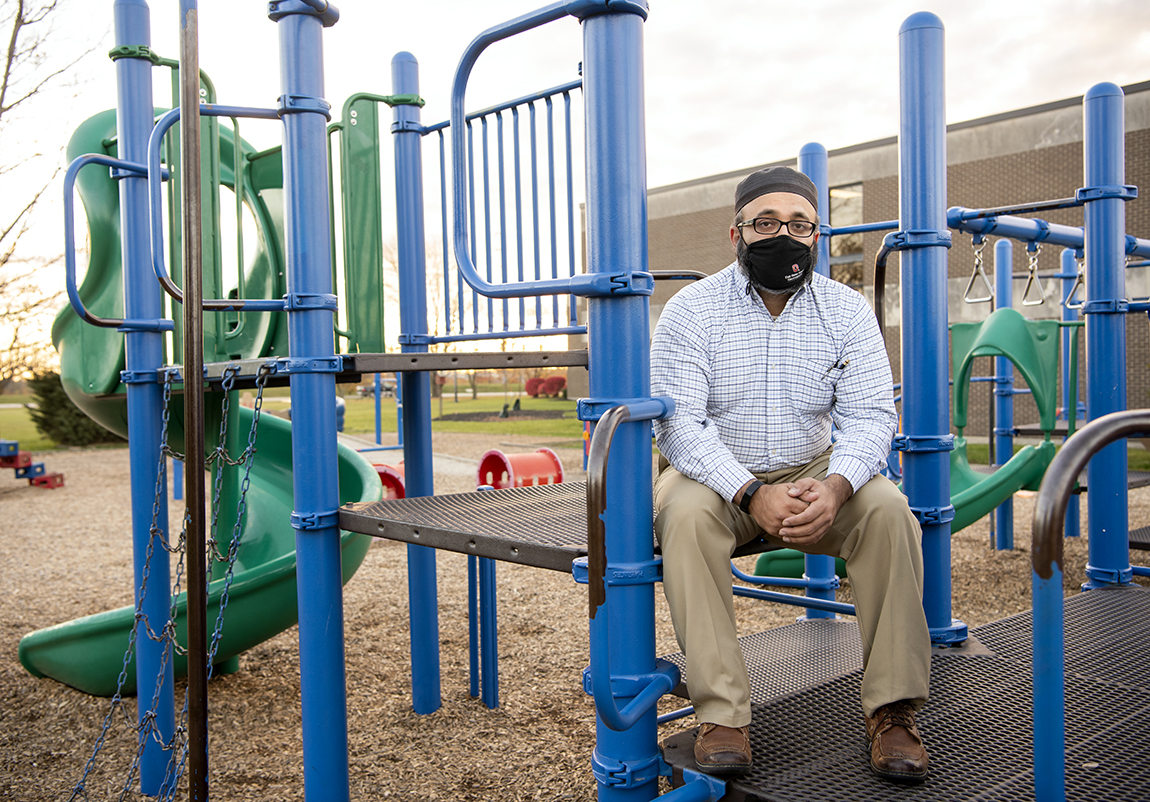Public health faculty, staff create COVID-19 surveillance tool for schools
Central Ohio K-12 schools using Ohio State system
By Denise Blough

A kindergartner develops a sore throat, so he visits the school nurse. A teacher and two students at the middle school next door call in sick with fevers. Across town, a second grader at another elementary school in the district goes home after a bad cough sets in.
All this information is entered into a system called the COVID-19 Analytics and Targeted Surveillance System (CATS), monitored by staff throughout the school district and the local public health department for signs of coronavirus outbreaks.
By tracking possible signs of COVID-19 infection — like school absences and nurse visits for COVID-like symptoms — CATS can serve as an early warning system for case clusters, said Ayaz Hyder, the public health professor who spearheaded the project.
CATS is now being used in 10 K-12 school districts in central Ohio, with as many more waiting to be onboarded.
“Over the summer, I learned there was no strategy to help school districts make decisions about what to do — how to switch between different learning modalities,” said Hyder, an assistant professor in the Division of Environmental Health Sciences.
So he reached out to Hilliard City Schools, where three of his children are enrolled, and proposed a pilot project using the COVID-19 monitoring methods he’s developed for agencies throughout the state. Hilliard agreed, and Franklin County Public Health was brought on board to provide expertise in contact tracing, outbreak investigation and data interpretation.
“They were getting pressure from parents to use local data, because county-level trends don’t always represent what’s happening in the individual community,” Hyder said. “We were able to provide that data, which has helped them make key decisions.”

Data from Hilliard City Schools' public COVID-19 dashboard
Rapid interest in CATS from other schools led to a contract from the Educational Service Center of Central Ohio to implement the system in districts throughout the region, said Anne Trinh, senior program manager at the College of Public Health’s Center for Health Outcomes and Policy Evaluation Studies, or HOPES.
Upper Arlington, Dublin, Grandview Heights, Westerville, New Albany, Whitehall, Worthington, Bexley and Groveport Madison school districts have also started using CATS, said Trinh, who’s been leading the onboarding process and managing the project, which is funded through the federal Coronavirus Aid, Relief and Economic Security (CARES) Act.
“CATS has the potential to become a foundational infrastructure for the foreseeable future, aiding in decision-making and communicating with community stakeholders” said Educational Service Center Superintendent Tom Goodney. “Anne and Dr. Hyder have become a welcome voice in our calls as we review state, regional, county and local data relating to the pandemic.”
And none of it would be possible without the undergraduate and graduate student workers who have been assisting in programming, managing and visualizing the data, Hyder said.
“They are working day and night on making these things behind the scenes happen,” he said. “They’ve really learned how to build the plane while also trying to fly it.”
Pranav Padmanabhan, a third-year undergraduate student and research assistant in Hyder’s lab, said he has gained invaluable skills working with CATS.
“Working on this project has taught me how to think ahead and anticipate certain questions or needs from decision-makers and attempt to address them preemptively,” Padmanabhan said. “Something may seem intuitive, but a useful intervention in the real world must be simple enough to communicate to others while also considering the most important factors from many perspectives.”
CATS is a strong example of a unique academic-educational-public partnership, Trinh said.
"We’ve been able to bring the school districts and public health together in a way that they haven’t worked with each other before. Public health typically gets involved when there is a confirmed case or an outbreak, but with our CATS system they’re getting involved before that happens,” she said.
“It’s been very rewarding ensuring the safety of our kids. And to know that we are doing our best to listen to data and science amid the various political and social environments in different districts,” Hyder said.
CATS is made possible with resources at the Ohio Supercomputing Center (OSC). Other Ohio State individuals involved in the project include OSC staff members Eric Franz and Jeff Ohrstrom, students Enhao Liu, Samuel Malloy, Dane Morey and Net Zhang, and faculty members David Kline, Michael Rayo and Elisabeth Root.
About The Ohio State University College of Public Health
The Ohio State University College of Public Health is a leader in educating students, creating new knowledge through research, and improving the livelihoods and well-being of people in Ohio and beyond. The College's divisions include biostatistics, environmental health sciences, epidemiology, health behavior and health promotion, and health services management and policy. It is ranked 22nd among all colleges and programs of public health in the nation, and first in Ohio, by U.S. News and World Report. Its specialty programs are also considered among the best in the country. The MHA program is ranked 5th and the health policy and management specialty is ranked 21st.